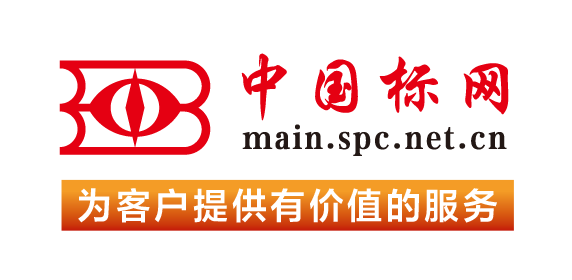【国外标准】 Standard Test Method for Water Immersion and Drying for Evaluation of Flood Damage Resistance
本网站 发布时间:
2024-02-28
开通会员免费在线看70000余条国内标准,赠送文本下载次数,单本最低仅合13.3元!还可享标准出版进度查询、定制跟踪推送、标准查新等超多特权!
查看详情>>
适用范围:
5.1 This test method establishes water immersion, drying, and cleaning procedures to be used when determining whether building materials noted in 1.1 are flood damage resistant for applications that comply with the National Flood Insurance Program (NFIP) [44 CFR § 60.3(a)(3)].5.2 This test method exposes the test specimen to water immersion and drying conditions to simulate the effects of wetting and subsequent drying that occurs with a flood event. The wetting and drying exposure is followed by surface cleaning. This test method provides a measure of how test specimens may respond to water immersion, subsequent drying, and cleaning that occur with flood events.5.3 This test method is useful for determining water absorption characteristics of different test specimens in terms of percent increase in test specimen weight, their drying characteristics in terms of elapsed time to dry to equilibrium weight, and changes in physical appearance following water immersion and surface cleaning.5.4 This test method is useful in comparing the water absorption characteristics of different test specimens, their drying characteristics, and changes in physical appearance following water immersion and surface cleaning. This test method is also useful in comparing test specimen physical dimensions before water immersion, immediately following removal from water immersion, after drying, and after cleaning.5.5 The ability to directly compare test results will vary by many factors including test specimen size and whether test specimens are individual building materials or composite assemblies of building materials.1.1 This test method is intended to apply to building materials used in construction below the base flood elevation (BFE) including, but not limited to: individual building materials and composite assemblies of building materials that constitute permanent integral parts of a finished building including walls, floors, ceilings, stairways, built-in partitions, finishes, cladding, and other similarly incorporated architectural and structural items.1.2 Requirements for evaluation of other hazards associated with flood damage including, but not limited to: debris impact, flood velocity, wave action, water pressure differential, scour, erosion, biological and chemical contaminants in floodwater, and other factors that would be adverse to continued use of the structure for its intended purpose including long-term occupant health impacts are outside of the scope of the methods presented herein.1.3 The water immersion, drying, and cleaning procedures specified in this test method establishes standard conditions for laboratory evaluation of test specimen response to water immersion, subsequent drying, and cleaning. The results of these tests are one factor in assessing the characteristics of building materials with regard to water immersion, drying, and ability to be cleaned. Application of these test results to predict these characteristics for actual building construction requires the evaluation of test conditions as compared to conditions of end-use.1.4 The water immersion and drying procedures shall not be construed as representative of water makeup, duration of immersion, or conditions of drying during an actual flood event because actual flood conditions vary with such factors as makeup of water, depth and duration of immersion, and ambient temperature and humidity.1.5 The cleaning procedures specified in this test method are intended to simulate surface cleaning that normally occurs after flooding.1.6 The cleaning procedures specified in this test method shall not be construed as superseding standards or manufacturer’s recommended methods for cleaning and restoration after flooding.1.7 A commentary to this test method is provided in Appendix X1.1.8 The values stated in inch-pound units are to be regarded as standard. The values given in parentheses are mathematical conversions to SI units that are provided for information only and are not considered standard.1.9 This standard does not purport to address all of the safety concerns, if any, associated with its use. It is the responsibility of the user of this standard to establish appropriate safety, health, and environmental practices and determine the applicability of regulatory limitations prior to use.1.10 This international standard was developed in accordance with internationally recognized principles on standardization established in the Decision on Principles for the Development of International Standards, Guides and Recommendations issued by the World Trade Organization Technical Barriers to Trade (TBT) Committee.
标准号:
ASTM E3075-18
标准名称:
Standard Test Method for Water Immersion and Drying for Evaluation of Flood Damage Resistance
英文名称:
Standard Test Method for Water Immersion and Drying for Evaluation of Flood Damage Resistance标准状态:
Active-
发布日期:
-
实施日期:
出版语种:
- 其它标准
- 上一篇: ASTM E3074/E3074M-20 Standard Practice for Clearance Examinations Following Lead Hazard Reduction Activities in Single Family Dwellings, in Individual Units of Multifamily Dwellings, and in Other Child-Occupied Facilities
- 下一篇: ASTM E3123-18 Standard Guide for Recognition and Derecognition of Environmental Liabilities
- 推荐标准
- ASTM 51401-21 Standard Practice for Use of a Dichromate Dosimetry System
- ASTM 51956-21 Standard Practice for Use of a Thermoluminescence-Dosimetry System (TLD System) for Radiation Processing
- ASTM A1010/A1010M-24 Standard Specification for Higher-Strength Martensitic Stainless Steel Plate, Sheet, and Strip
- ASTM A1016/A1016M-24 Standard Specification for General Requirements for Ferritic Alloy Steel, Austenitic Alloy Steel, and Stainless Steel Tubes
- ASTM A105/A105M-24 Standard Specification for Carbon Steel Forgings for Piping Applications
- ASTM A1064/A1064M-24 Standard Specification for Carbon-Steel Wire and Welded Wire Reinforcement, Plain and Deformed, for Concrete
- ASTM A108-24 Standard Specification for Steel Bar, Carbon and Alloy, Cold-Finished
- ASTM A1080/A1080M-24 Standard Practice for Hot Isostatic Pressing of Steel, Stainless Steel, and Related Alloy Castings
- ASTM A1090/A1090M-19(2024) Standard Specification for Forged Rings and Hollows for Use as Base Plates in Power Transmission Structures
- ASTM A1115/A1115M-24 Standard Practice for Construction of Mechanically Stabilized Earth Walls with Inextensible Soil Reinforcement
- ASTM A1128-24 Standard Specification for Stainless Steel Shielded, Rubber Gasketed Couplings Having an Integral Restraint Feature for Joining Hubless Cast Iron Soil Pipes and Fittings Where External Restraint Is Required
- ASTM A179/A179M-24 Standard Specification for Seamless Cold-Drawn Low-Carbon Steel Heat-Exchanger and Condenser Tubes
- ASTM A234/A234M-24 Standard Specification for Piping Fittings of Wrought Carbon Steel and Alloy Steel for Moderate and High Temperature Service
- ASTM A242/A242M-24 Standard Specification for High-Strength Low-Alloy Structural Steel
- ASTM A249/A249M-24a Standard Specification for Welded Austenitic Steel Boiler, Superheater, Heat-Exchanger, and Condenser Tubes
 我的标准
我的标准 购物车
购物车 400-168-0010
400-168-0010














